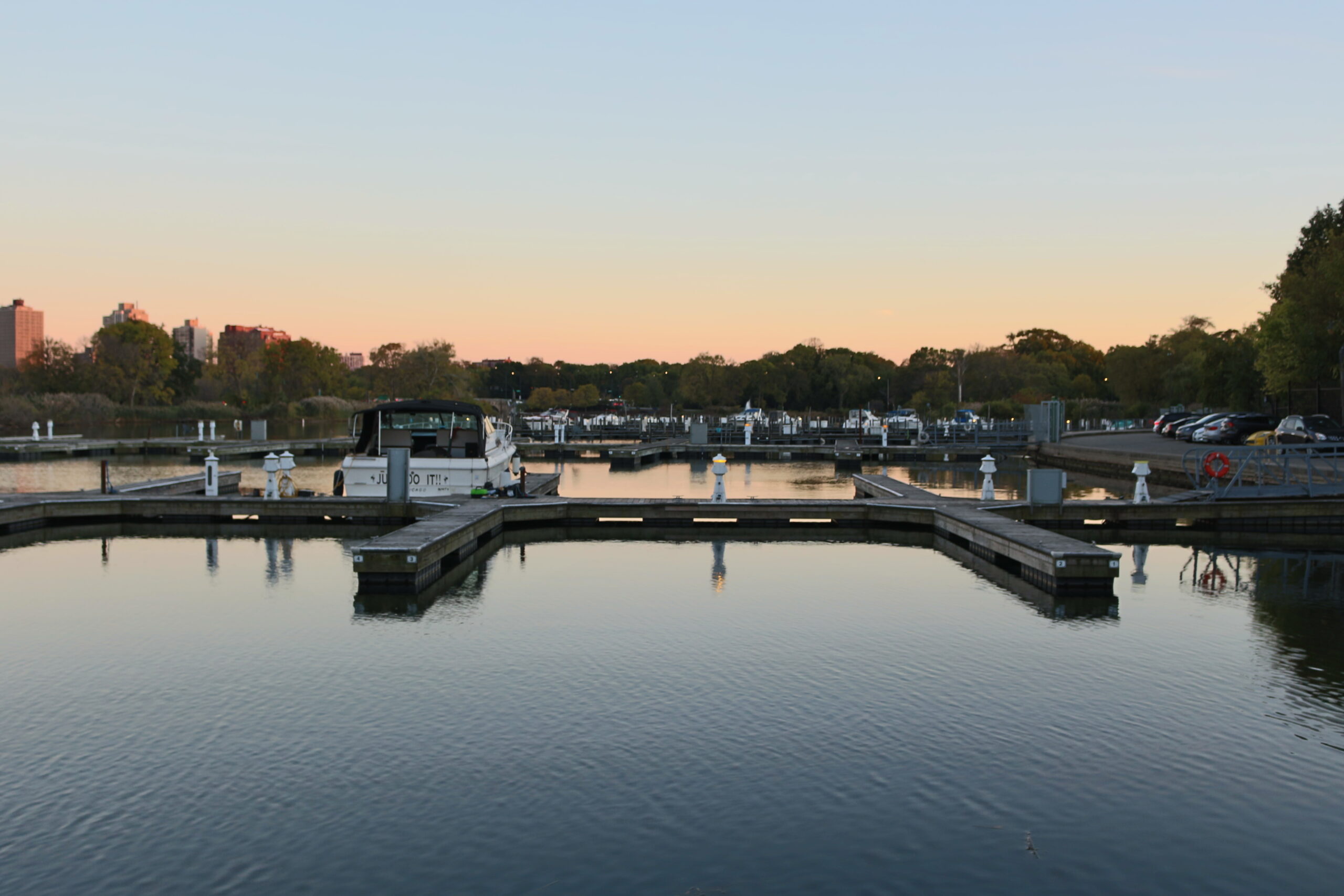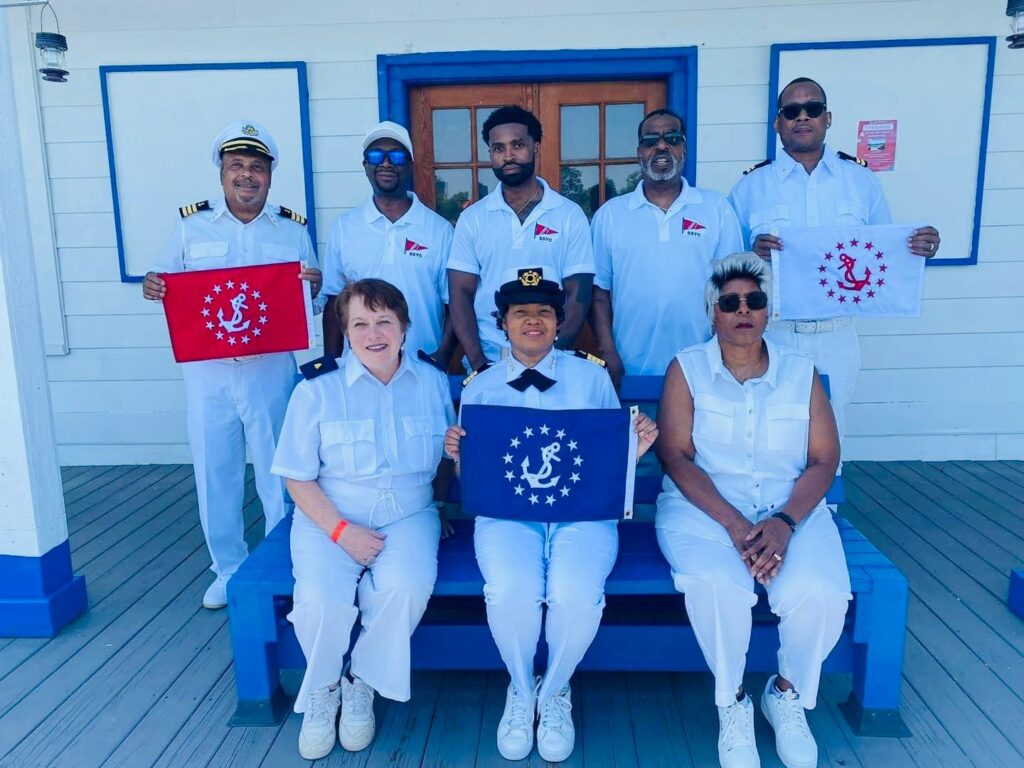
SSYC
Our Mission
Southern Shore
The Southern Shore Yacht Club (SSYC or Club) is a powerboating organization in Chicago, IL, which enjoys a reputation driven by our club values to promote safe boating, camaraderie, and community service.
Pictured: 2024 Board of Directors

110 Years and Still Counting
The Southern Shore Yacht Club has grown from just a dream of eleven Chicago power boatmen to one of the most popular and respected yacht clubs on the Great Lakes.
Today, the large Cape Cod clubhouse in the inner harbor at Jackson Park on Chicago’s South Side, plays host to visiting yachtsmen from across Lake Michigan. The inner harbor is widely recognized as one of the safest and most beautiful harbors on the lake’s southern shore.
But it wasn’t like that back in 1912, when the small group of power boaters decided that they were going to form a yacht club of their own. It wasn’t only that they wanted a private club; they felt they actually had to have it to save the sport of power boating on Chicago’s South Side.
In those early days, the only club in Jackson Park was in the larger outer harbor where the sailing fleet was anchored along with the few power boats then active. The majority of the club’s members were sailboat men and the club offered little to those who leaned towards power.
All eleven original members agreed and they promptly organized the South Shore Power Boat Club. That was in the early summer of 1912, when automobiles had not yet come into general use. There was no gasoline tank in the harbor and fuel was difficult to obtain. About the only way a skipper could fill his boat’s tank was to lug the gas in five-gallon cans across the park from Stony Island Avenue, some five or six blocks away. That took a lot of the joy out of power boating.
But the founders of the new club persuaded a local gasoline dealer to bring a tank wagon down to the outer harbor every Saturday afternoon. That helped quite a bit, and also got the club several new members. When non-members attempted to buy gas from the wagon driver, they found they needed applications. And the only one who had the applications was the secretary of the SSPBC. They got the gas if they joined the club. They joined.
Meetings were held that year aboard the old Santa Maria, a replica of Columbus’ flag ship anchored in the outer harbor. By the spring of 1913, the club was granted a charter by the Secretary of the State.
Now a new problem confronted the club. Its membership had outgrown the Santa Maria and most of the members wanted their own clubhouse. The anxious skippers found what they wanted moored on Lake Calumet, a few miles south of Jackson Park. They collected $700 from members and made their purchase. The entire SSPBC fleet turned out to tow the new clubhouse down the Calumet River, along the lake front to the outer harbor. It wasn’t long before the boat was anchored to the south shore of the outer harbor.
But the troubles of the new South Shore Power Boat Club were just beginning. Late in November, a northeaster kicked up the lake and bounced the old tub against the harbor’s rocky bottom. That was more than the aging hull could stand and when members came down the next day, they found their prized clubhouse half under water. Out went an immediate SOS to the other members and in no time, the houseboat was hauled onto shore where it was safe from the water.
But it wasn’t safe from thieves. Someone broke into it and stole everything of any value.
By this time, the members had decided that the only place to have the club was in the unused inner harbor. At first the Park District thought otherwise and promptly vetoed the plan. But those charter members were determined. The Park Board learned this before long and granted them permission to moor the houseboat on the western shore of the inner harbor on May 26, 1914. The present clubhouse occupies the same site.
Once again, the entire membership turned out to tow the clubhouse to its new location. Everything went along fine until they tried to tow the houseboat under the bridge spanning the channel separating the two harbors. The boat was too high and the bridge too low. Since the bridge couldn’t be raised, the resourceful SSPBC members lowered the boat. They flooded the clubhouse just enough to permit it to pass safely under the bridge.
In 1921, the Park Board began charging for moorings. Fees ranged from $7.50 for boats under twenty feet to $40 for those up to sixty feet. SSPBC members protested and even took their case to court. After a lengthy legal battle, the court ruled that although the Park District owned the land under the water, it did not actually own the water. Therefore, the court decided the Park Board had no right to charge mooring fees.
But the victory was short lived. Boat owners decided it would be cheaper to pay the Park Board than to furnish their own moorings.
As the years rolled by, new members joined the club and old pals dropped out. Boats were bought and sold, although not as frequently as they are now, and the membership had new faces every year. This, coupled with the driving spirit of the charter members still active made the organization grow. The South Shore Power Boat Club, which was changed to Southern Shore Yacht Club in 1930, was rapidly becoming one of Chicago’s leading boat clubs.
Then came 1934 – the Century of Progress, the Great Depression, and disaster to the club. They year got off to a promising start and no one could have foretold the gloom with which it was to end.
The harbor needed dredging and the Park District decided to get it done. The entire lagoon was drained dry before the season opened. A few members watched the dredging with keen interest. They hoped to recover some prized possessions lost overboard the summer before. But, all that was found was an empty old safe, which had been dumped into the harbor by some burglars, and a rusted lamp post, a remnant of the 1890 World’s Fair.
After the dredging, the boating season of 1934 followed the usual pattern. Everyone had their share of joys, troubles, and adventures.
Most of the boats had already been put in dry-dock when the big blow came. It struck without warning on the night of October 10. Just a small spark at first, then flames, roaring flames, and the old houseboat was completely gutted.
For a while it looked like the end of the Southern Shore Yacht Club. That was in 1934, remember, and most of the members were virtually broke. The club treasury couldn’t stand the expense of a new building. One might never have been built had it not been for the complete and wholehearted cooperation and determination of the entire membership.
For some members, the burning of the old houseboat appeared to be a blessing in disguise. The boat had been entirely inadequate as a club for the expanding membership and many had campaigned avidly for a new building. They viewed the fire as an incentive to get what they wanted. And they got it – with the help of the rest of the members.
One of the members, an architect, drew up plans for the new clubhouse. One of the eleven founders, was chosen as general contractor, and the club got creative in obtaining building materials.
Most of the wood used for studding, rafters and beams came from the old Deering plant which, conveniently, was being dismantled about that time. In addition, a North Side crib was being torn down and timbers were often found floating in the lake off the Jackson Park harbors. But they weren’t floating there long. Each time a club member’s boat returned to the harbor, a couple of these huge timbers would be trailing behind. After a few days, most of the beams which had floated south were stacked neatly alongside the remnants of the old clubhouse. The portholes in the clubhouse came from the Pirates Cove at the World’s Fair and were purchased for just $2.50 each. But the biggest find was yet to come. An old brick home on Harper Avenue was being torn down and the bricks were left unattended near the street. It wasn’t long before one of the yachtsmen had brought several automobile loads down to the harbor.
The smart looking new Cape Cod clubhouse was completed in the spring of 1935. Opening Day that year was a gala affair. One hundred twenty persons were served dinner that evening and the club was given a full-page picture spread in Chicago’s Sunday Tribune.
As the years passed by, more and more Chicagoans became interested in power boating. For many years, virtually every mooring in the harbor was in use.
More recently, the club has once again found itself facing challenges. Historic water levels in Lake Michigan meant that many boats were unable to pass under the bridge separating the inner and outer harbors. Moorings in the inner harbor remained empty. High water and termites also took a toll on our beautiful clubhouse floor, which now needs a total replacement. Additional building repairs to the 85-year-old clubhouse are needed.
But once again, a dedicated group of boating enthusiasts has stepped forward to overcome these challenges and guide SSYC in the years ahead.
Please join us. According to 2022 Commodore, Ken Mason, “The best is yet to come!”
4-27-22
Our Core Values
- The Southern Shore Yacht Club seeks to operate in an environment where people show respect for others and their property. Respect is defined as consideration for the well-being of another’s person, feelings, and possessions, to ensure no damage or deprivation is caused to any of them.
- The Southern Shore Yacht Club seeks to operate in an environment, which is free from harassment. Harassment is defined as any action directed at an individual or group, which creates a hostile, intimidating or offensive environment.
- The Southern Shore Yacht Club seeks to operate in a non-discriminatory environment. This means that every Member shall have an equal opportunity and shall receive fair treatment in accordance with the law as well as the Club by-laws, rules, and regulations.

